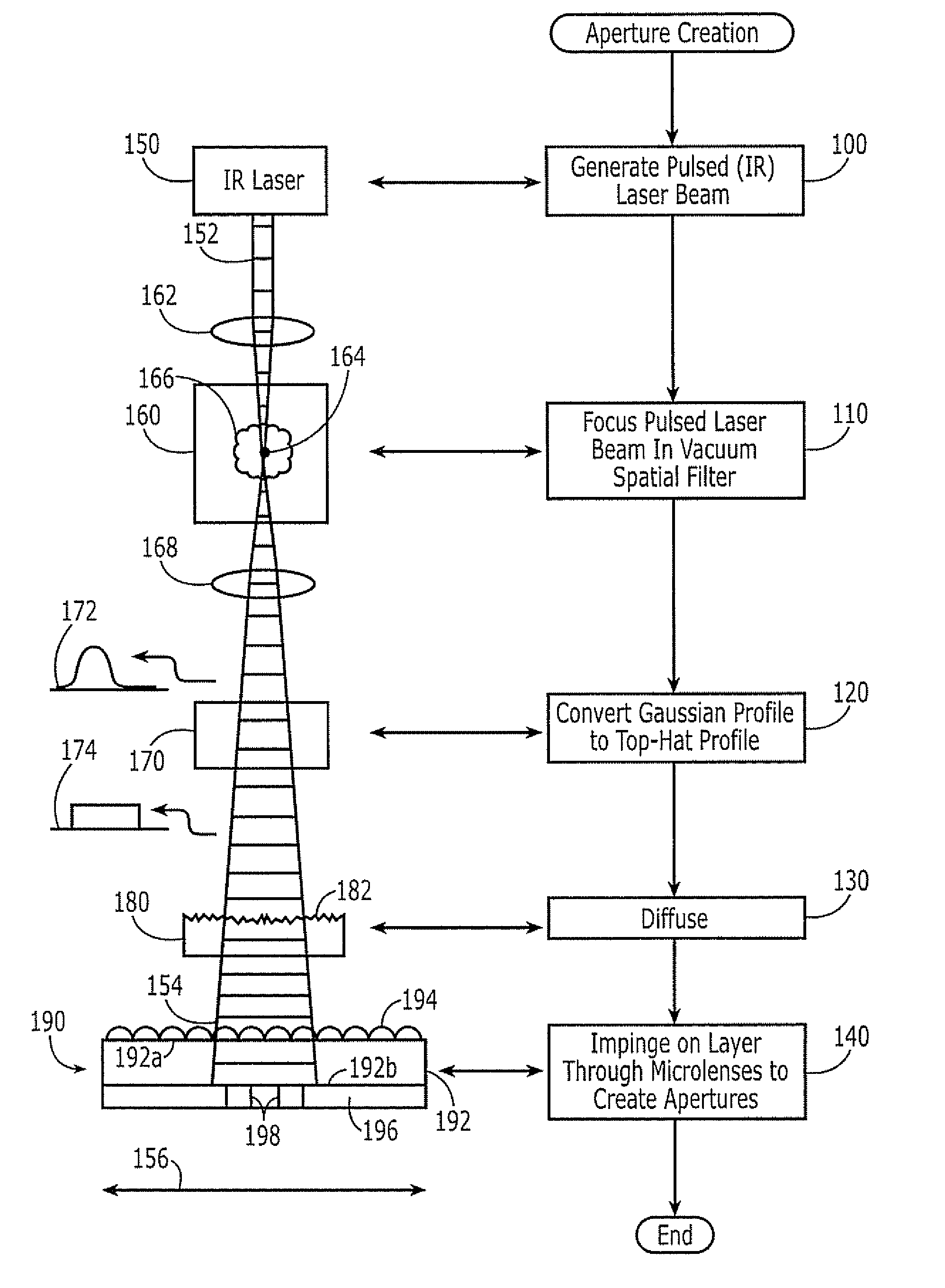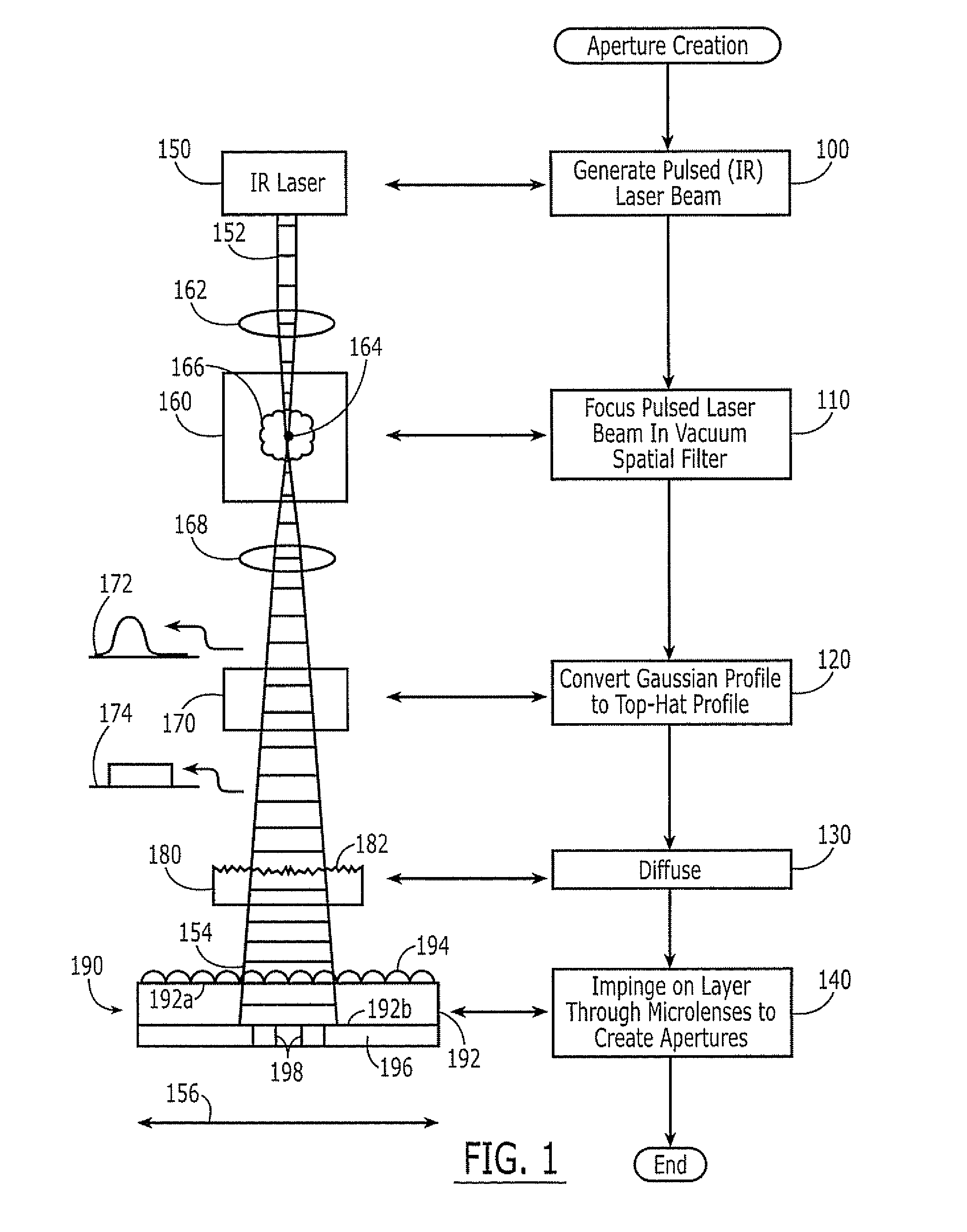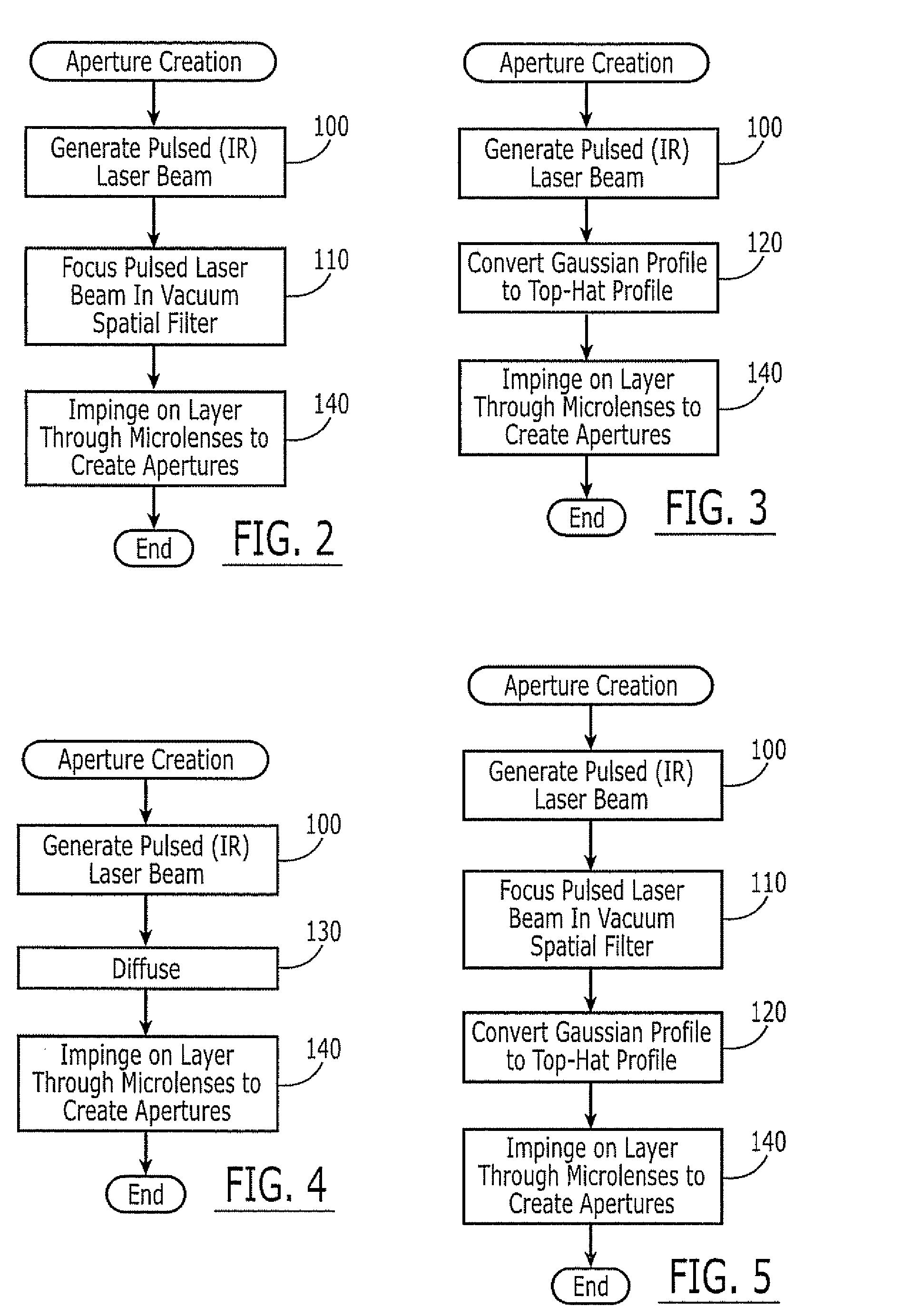Methods and Apparatus for Processing a Pulsed Laser Beam to Create Apertures Through Microlens Arrays, and Products Produced Thereby
a laser beam and microlens array technology, applied in the field of microfabrication methods, can solve the problems of low throughput, non-uniform aperture, and widespread commercial use of laser beams to create self-aligned apertures through microlens arrays
- Summary
- Abstract
- Description
- Claims
- Application Information
AI Technical Summary
Benefits of technology
Problems solved by technology
Method used
Image
Examples
examples
[0093] The following Examples shall be regarded as merely illustrative and shall not be construed as limiting the invention.
[0094] A laser 150 was configured as in FIG. 8. The top hat profile laser beam is directed to a mirror 840, and is reflected and traverses a distance of about 2 to about 50 feet. The beam then strikes a second mirror 850, which is mounted perpendicular to a rotary table. The rotary table oscillates between angles of + / −1 to about +−5 degrees to cause the beam 154 to scan over the surface to be exposed, which is positioned opposite this last oscillator mirror 850. Positioned between the last oscillating mirror 850 and the lens sheet 190 to be exposed is the diffuser element 180. As mentioned before, the amount of diffusive character of the element may have an impact on aperture creating.
[0095] Diffusive optical elements 180 can be acquired or created by known techniques. In this example, a glass sheet 180 was subject to a glass bead spray at 80 lb. pressure an...
PUM
 Login to View More
Login to View More Abstract
Description
Claims
Application Information
 Login to View More
Login to View More - R&D
- Intellectual Property
- Life Sciences
- Materials
- Tech Scout
- Unparalleled Data Quality
- Higher Quality Content
- 60% Fewer Hallucinations
Browse by: Latest US Patents, China's latest patents, Technical Efficacy Thesaurus, Application Domain, Technology Topic, Popular Technical Reports.
© 2025 PatSnap. All rights reserved.Legal|Privacy policy|Modern Slavery Act Transparency Statement|Sitemap|About US| Contact US: help@patsnap.com



